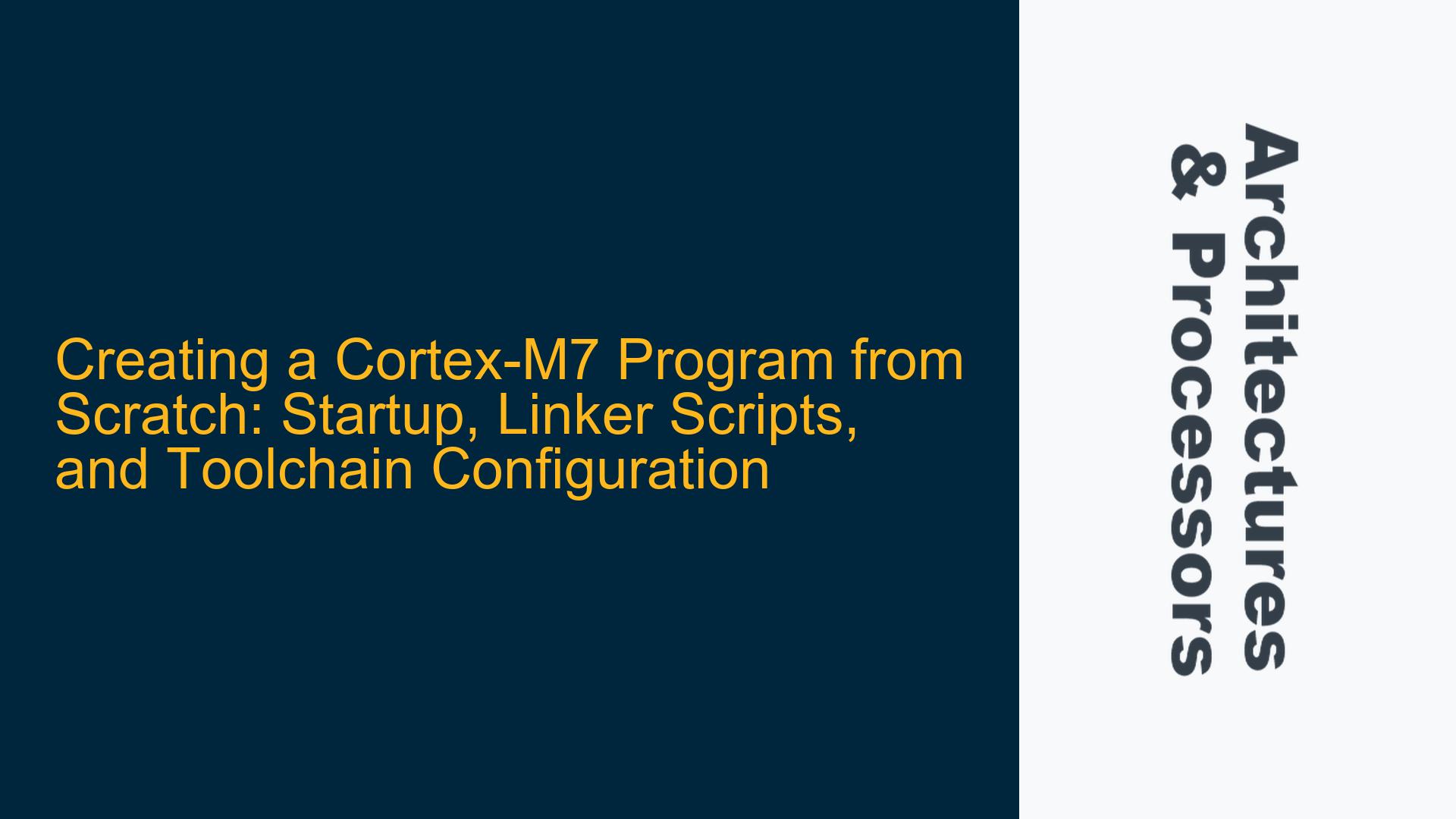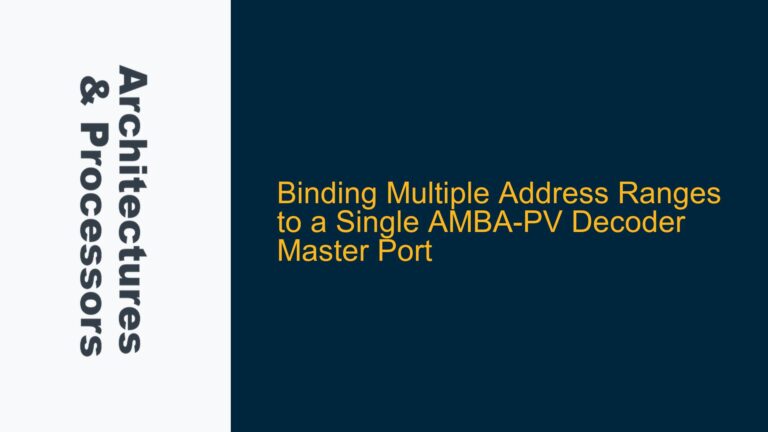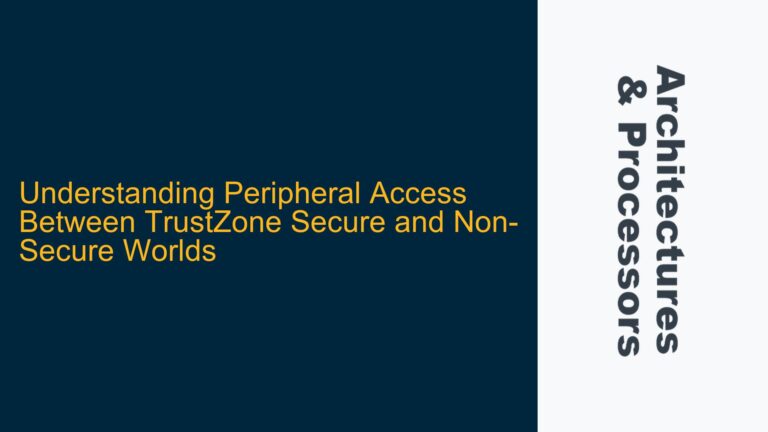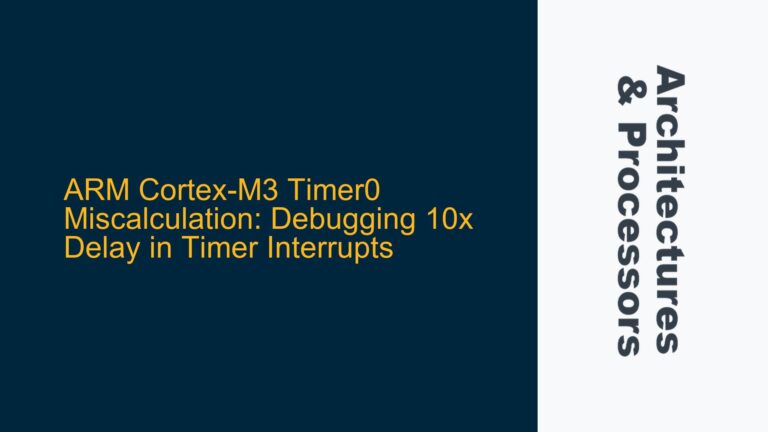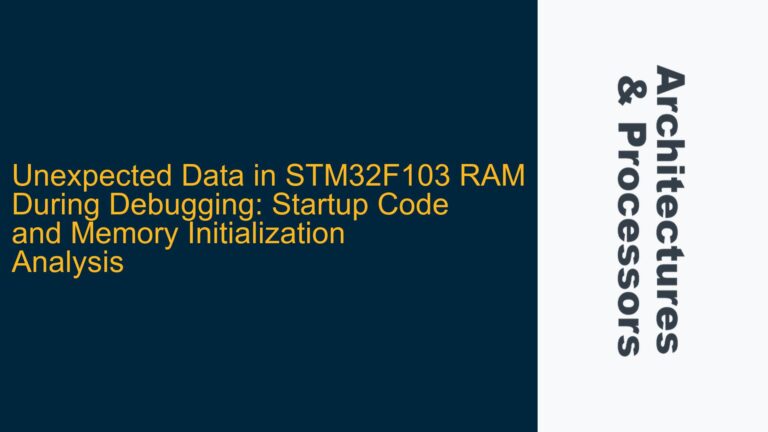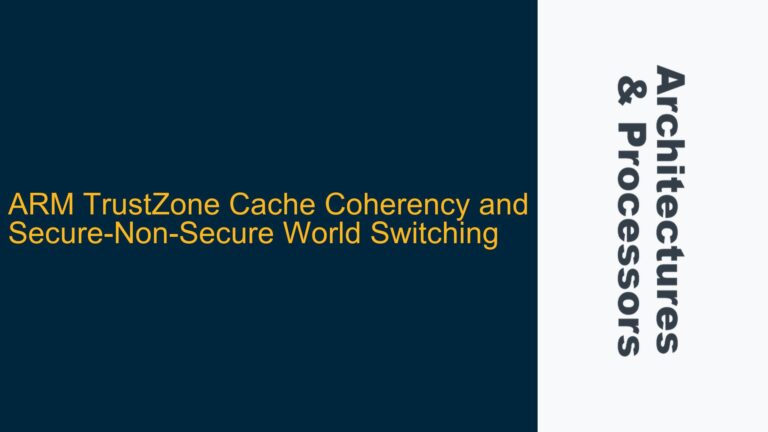Cortex-M7 Boot Process and Initialization Challenges
The Cortex-M7 processor, part of ARM’s Cortex-M series, is a high-performance microcontroller core designed for embedded systems requiring significant computational power. When creating a program for the Cortex-M7 from scratch, developers must handle several low-level tasks, including writing the startup code, configuring the linker script, initializing the system, and setting up the toolchain. These tasks are critical for ensuring the system boots correctly and operates as intended.
The startup process for the Cortex-M7 involves several key steps. First, the processor fetches the initial stack pointer and reset vector from the vector table located at the beginning of the memory map. The reset vector points to the reset handler, which is responsible for initializing the system. This includes setting up the memory system, configuring the clock tree, and initializing any necessary peripherals. The startup code must also handle the initialization of the C runtime environment, which involves setting up the .data and .bss sections in memory.
One of the challenges in writing startup code for the Cortex-M7 is ensuring that the memory system is correctly configured. The Cortex-M7 features a Harvard architecture with separate instruction and data buses, which can lead to issues with cache coherency and memory alignment. Developers must ensure that the memory regions are correctly defined in the linker script and that the cache is properly initialized before any data is accessed.
Another challenge is configuring the toolchain. The toolchain includes the compiler, assembler, linker, and debugger, and must be configured to generate code that is compatible with the Cortex-M7’s architecture. This includes setting the correct CPU flags, enabling the appropriate instruction set, and configuring the memory layout. The linker script must define the memory regions and sections, and ensure that the code and data are placed in the correct locations.
Toolchain Configuration and Memory Layout Considerations
The choice of toolchain and the configuration of the memory layout are critical factors in creating a program for the Cortex-M7 from scratch. The toolchain must be configured to generate code that is optimized for the Cortex-M7’s architecture, and the memory layout must be carefully designed to ensure that the program operates correctly.
The toolchain configuration involves setting the appropriate compiler flags to enable the Cortex-M7’s features, such as the floating-point unit (FPU) and the cache. The compiler must be configured to generate code that is compatible with the Cortex-M7’s instruction set, which includes both Thumb-2 and ARM instructions. The assembler must be configured to handle the Cortex-M7’s specific assembly language, and the linker must be configured to generate the correct memory layout.
The memory layout is defined in the linker script, which specifies the memory regions and sections. The linker script must define the memory regions for the code, data, and stack, and ensure that the sections are placed in the correct locations. The linker script must also handle the initialization of the .data and .bss sections, which are used for initialized and uninitialized data, respectively. The linker script must ensure that the .data section is copied from flash to RAM during startup, and that the .bss section is zero-initialized.
The memory layout must also take into account the Cortex-M7’s cache and memory protection unit (MPU). The cache must be properly initialized before any data is accessed, and the MPU must be configured to protect critical memory regions. The linker script must ensure that the cache and MPU are correctly configured, and that the memory regions are aligned to the cache line size.
Writing Startup Code and Linker Scripts for Cortex-M7
Writing startup code and linker scripts for the Cortex-M7 requires a deep understanding of the processor’s architecture and the toolchain’s capabilities. The startup code must handle the initialization of the system, including the memory system, clock tree, and peripherals, and the linker script must define the memory layout and sections.
The startup code begins with the reset handler, which is the entry point of the program. The reset handler must initialize the stack pointer and set up the vector table. The vector table contains the addresses of the exception handlers, including the reset handler, and must be placed at the beginning of the memory map. The reset handler must then initialize the memory system, including the cache and MPU, and configure the clock tree.
The startup code must also initialize the C runtime environment, which involves setting up the .data and .bss sections. The .data section contains initialized global and static variables, and must be copied from flash to RAM during startup. The .bss section contains uninitialized global and static variables, and must be zero-initialized. The startup code must ensure that the .data and .bss sections are correctly initialized before the main function is called.
The linker script must define the memory regions and sections, and ensure that the code and data are placed in the correct locations. The linker script must define the memory regions for the code, data, and stack, and ensure that the sections are aligned to the cache line size. The linker script must also handle the initialization of the .data and .bss sections, and ensure that the cache and MPU are correctly configured.
In conclusion, creating a program for the Cortex-M7 from scratch involves several critical tasks, including writing the startup code, configuring the linker script, initializing the system, and setting up the toolchain. These tasks require a deep understanding of the Cortex-M7’s architecture and the toolchain’s capabilities, and must be carefully executed to ensure that the program operates correctly. By following the steps outlined in this guide, developers can create a robust and efficient program for the Cortex-M7 from scratch.
